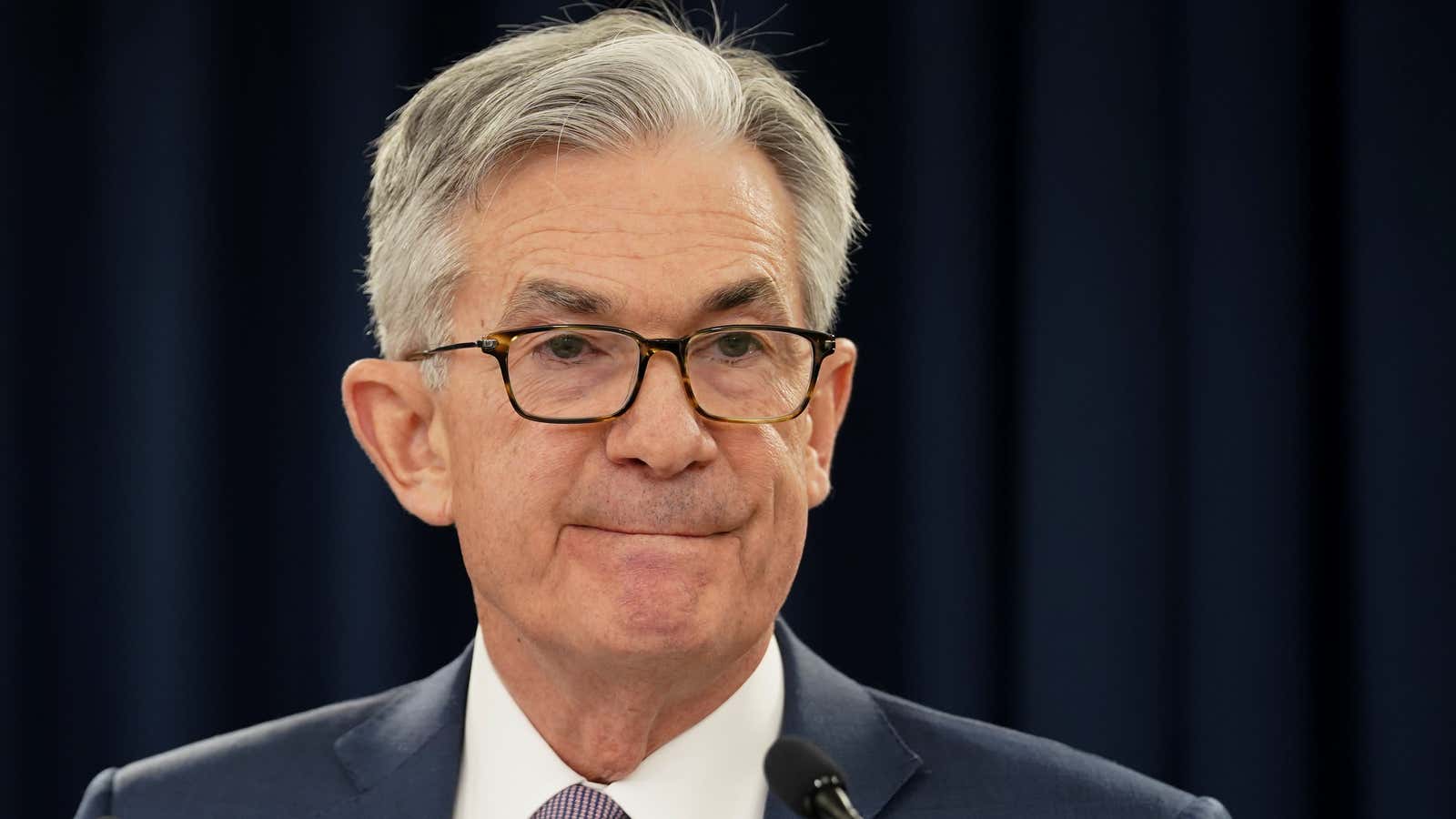Heated inflation is going to last about as long as the world’s supply-chain problems do.
That was the main takeaway from a Nov. 3 press conference with US Federal Reserve chair Jerome Powell, who forecast that inflation would cool off in the second and third quarters of 2022—right around when most economists expect the supply-chain issues to ease.
Powell’s comments came as the central bank announced it would begin paring back its $120 billion-a-month in bond purchases, decreasing the outlays by $15 billion a month in November and December, and likely at a similar clip after that, until the taper is complete (in June if the initial pace remains steady). The stimulus has kept rates on short-term Treasurys low while encouraging investors to put their money in the market instead of into safe-haven assets.
“We think we can be patient,” Powell said. “If a response is called for, we will not hesitate. So what I will tell you is we are watching carefully to see whether the economy evolves in line with our expectations and policy will adapt appropriately.”
Why has the Fed kept interest rates low?
The US economy has yet to reach the Fed’s goal of maximum employment. Powell laid the blame for this mainly on the delta variant of covid-19, which made workplaces potentially more dangerous; he also noted that vaccination rates have slowed compared to their spring peak. Because of this, the Fed is continuing to allow the economy to run hot by keeping interest rates near zero in the hopes that the job market will continue to work out barriers to employment.
“We don’t think it’s a good time to raise interest rates because we want to see the labor market heal further, and we have very good reason to think that that will happen as the delta variant declines,” Powell said.
What did the Fed get wrong about the labor market?
Powell dismissed the idea that there would be a wage-price spiral because wages have not kept up with inflation.
But he also admitted the Fed had misjudged the labor market, noting that school reopenings and the expiration of emergency unemployment benefits did little to ease the US labor shortage.
“I think there’s there’s room for a whole lot of humility here as we try to think about what maximum employment would be,” the Fed chair said.
